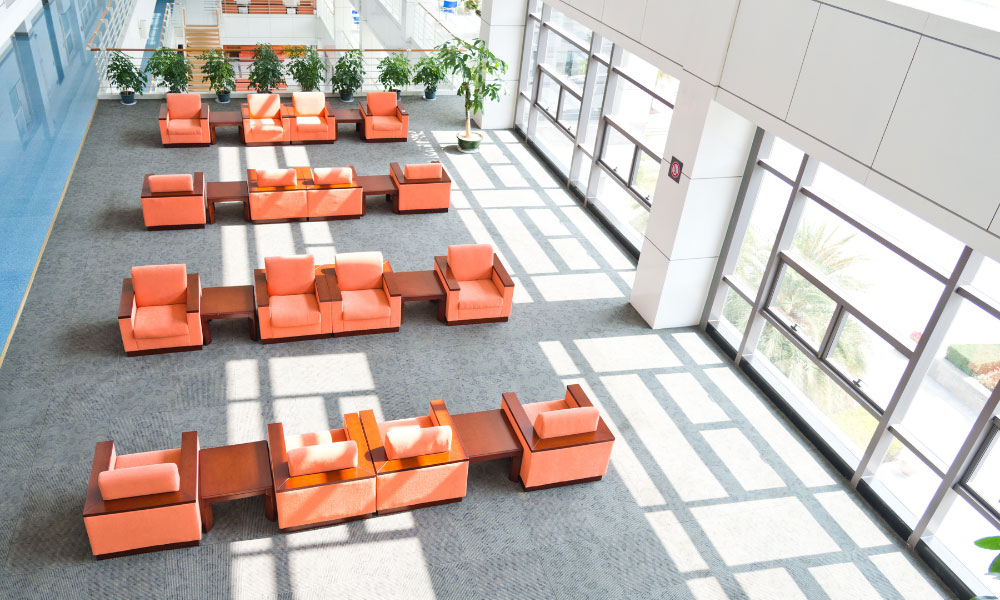
The rise of hybrid working has transformed the modern workplace. Employees now split their time between the office, home, and other remote locations, bringing flexibility and increased productivity. However, this new way of working also presents unique security challenges as organisations must protect physical assets, secure premises, manage access, and maintain oversight across multiple locations. In this article, we explore the top security concerns in hybrid workspaces and outline practical strategies to mitigate risks using smart security solutions and bespoke systems design.
One of the most significant risks in hybrid workplaces is the lack of consistent physical security. Offices that are only partially occupied are more vulnerable to theft, vandalism, or unauthorised access. Equipment left unattended, documents on desks, or unlocked storage rooms can easily be targeted when staff are working remotely.
Recent research shows that 26% of all business premises in England and Wales were victims of crime during the last 12 months, with further research suggesting an increase in office theft or break-ins when premises are less frequently staffed, thus highlighting the importance of robust physical security measures. Organisations must therefore ensure that every office or facility, even those used only intermittently, is protected with appropriate security systems.
Access control is also a critical need in hybrid work environments. Restricting entry to authorised personnel not only protects physical assets but also ensures employee safety. Keycards, biometric systems, and smart access solutions allow organisations to control who enters and exits the building and when.
Monitoring systems, such as CCTV and remote surveillance, also complement access control by providing real-time visibility of activity across multiple sites. Modern security systems can alert security personnel to unusual movement, unauthorised access attempts, or suspicious behaviour, enabling a rapid response even when offices are sparsely occupied.
Implementing bespoke access control systems tailored to the organisation’s unique layout and workflows also ensures maximum effectiveness. Smart security solutions can integrate multiple layers, intruder alarms, cameras, and entry systems, into a single, easy-to-manage platform.

Hybrid work often involves rotating equipment between offices and remote locations. Laptops, projectors, and other high-value items can easily be lost, stolen, or damaged if not properly secured, therefore physical security measures such as lockable cabinets, secured storage rooms, and tethered devices are essential.
Smart security systems can track and monitor the movement of assets within an office environment, automatically logging when equipment is moved or accessed. Integrating this capability with access control and CCTV creates a comprehensive approach, making it easier to identify risks before they escalate.
Smart security systems play a key role in hybrid work environments by combining technology with bespoke system design. Integrated solutions allow organisations to:
While the primary focus of hybrid work security is physical, digital vulnerabilities and cybersecurity cannot be ignored. Employees often connect to office networks from home or use personal devices for work purposes. Unsecured home networks or outdated devices can create indirect risks to physical security. For instance, allowing unauthorised access to smart security systems or cloud-based monitoring platforms.
It’s important to implement secure remote access protocols and ensure employees are aware of safe practices, such as using VPNs and strong passwords. Even though cyber threats are secondary to physical security in this context, addressing them supports the integrity of integrated smart systems.

Effective security in hybrid workplaces begins with clear policies. Employees must understand procedures for securing equipment, accessing premises, and reporting incidents. Policies should cover both office-based and remote scenarios, ensuring consistency regardless of where employees work.
Training is equally important. Staff need to be familiar with smart security systems, know how to respond to alerts, and understand their role in protecting the organisation’s assets. Regular updates and refreshers help maintain a culture of vigilance and reinforce the importance of following procedures.
Hybrid work requires robust emergency planning. With staff spread across multiple locations, rapid communication and coordinated response are vital. Alarm systems, CCTV, and access logs should be integrated to provide real-time information during incidents.
Regular drills and scenario planning ensure employees know what to do in cases of unauthorised access, attempted theft, or other emergencies. Smart systems can automatically trigger alerts and guide staff, helping to minimise confusion and reduce response times.
A common concern in hybrid work environments is maintaining security without hindering productivity and smart security solutions allow organisations to achieve both. Automated access, remote monitoring, and intelligent alerts mean employees can focus on work while systems maintain oversight.
Bespoke security designs ensure that each office or facility is secured according to its specific needs, avoiding generic solutions that may impede workflow. By integrating alarms, CCTV, and access control into one manageable system, organisations can create safe, efficient environments for hybrid teams.

If your organisation operates a hybrid workplace, it’s essential to ensure your offices, equipment, and staff are protected with a bespoke security solution designed for your unique needs. Hybrid working presents challenges that standard security systems may not fully address, so a tailored approach combining access control, CCTV, alarms, and smart monitoring is critical.
BusinessWatch has extensive experience designing and installing customised security systems for businesses of all sizes. Our team works closely with clients to assess risks, create integrated solutions, and implement smart security systems that provide comprehensive protection without disrupting daily operations. With a focus on innovation, reliability, and peace of mind, BusinessWatch ensures that hybrid workplaces remain secure, efficient, and resilient.
Get in touch today to discuss your hybrid workplace security needs and find out how a bespoke solution can safeguard your business, assets, and employees. You can also call us at 0330 094 7404.